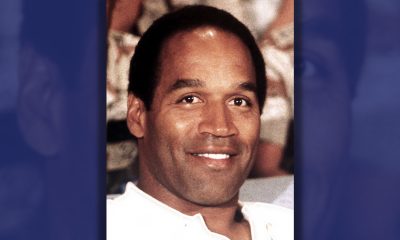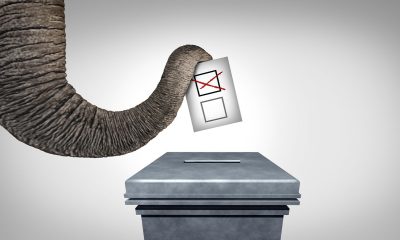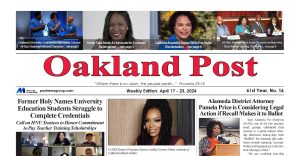#NNPA BlackPress
INTERVIEW: Are Republican Senators in Fear of ‘Don Corleone’ Trump? “Yes!” Says Schumer
NNPA NEWSWIRE — NNPA Newswire interviewed Senate Minority Leader Chuck Schumer (D-NY). The discussion covered a wide range of topics, focusing primarily on the impeachment of the president. The Senator also shared some insight on his conversations with Senate Majority Leader Mitch McConnell (R-Ky.), and House Speaker Nancy Pelosi (D-Calif.).
By Stacy M. Brown, NNPA Newswire Senior Correspondent
@StacyBrownMedia
NNPA Newswire interviewed Senate Minority Leader Chuck Schumer (D-NY). The discussion covered a wide range of topics, focusing primarily on the impeachment of the president. The Senator also shared some insight on his conversations with Senate Majority Leader Mitch McConnell (R-Ky.), and House Speaker Nancy Pelosi (D-Calif.).
Audio of the discussion is included.
Republicans have steadfastly sided with President Donald Trump on impeachment and most other issues, perhaps out of fear that they might wind up sleeping – politically – with the fishes.
At least that’s how Senate Minority Leader Chuck Schumer views the otherwise hard-to-explain loyalty Republicans have displayed toward the president.
When asked whether he believed the GOP has a “Don Corleone-like” fear of the president, Schumer quickly answered in the affirmative.
“I have never seen anything like this,” Schumer told NNPA Newswire one day after the House voted to impeach the president, and moments after the Democrat met with Senate Majority Leader Mitch McConnell to discuss the upcoming impeachment trial in the Senate.
“What motivates these Republicans to just circle the wagons? And, whatever this president says, who is known for having a low moral character, who is known for not telling the truth, why do they rally around him? When I talk to a good number of them privately, they know how bad this guy is. But, there’s one reason they rally around him: Fear.” When asked, “What, is he the Godfather… Corleone here?” the Senator chucked and replied, “Politically speaking, he probably is.”
On Wednesday, December 18, the House voted along party lines to impeach Trump, making him just the third president in U.S. history to face impeachment. Richard Nixon resigned during the impeachment process.
Since the historic impeachment vote, House Speaker Nancy Pelosi has said she would withhold sending the case to the Senate until Democrats and Republicans can reach a consensus on how a Senate trial would take place.
Based on the Constitution, if the Senate votes to convict Trump, he would be removed from office.
McConnell and other Republicans have said there’s no chance they’d convict the president and GOP leaders have threatened to lock Democrats and the public out of any Senate trial.
“Impeachment of the president is a very solemn and serious moment for our country,” Schumer stated.
“When you have a president who overreaches, the founding fathers put a few tools or checks on him, but the biggest and most important most serious and solemn check is impeachment. And, if the president goes off the rails, the Founding Fathers said the Congress has the ability to remove him,” he noted.
The House voted in favor of two articles of impeachment against Trump, obstruction of Congress and abuse of power.
Schumer said the Founding Fathers listed their top fear as being a president overreaches his authority and that he would get a foreign government to interfere in the U.S. election.
“That’s what this is all about,” Schumer stated.
“So, conducting an impeachment trial in the Senate is a weighty and solemn responsibility and we Democrats in the Senate believe that the trial must be fair and it’s important to let the American people judge it to be fair,” he added.
A fair trial is when the Senate hears all the evidence and can decide the case impartially, and the only way to accomplish that is with witnesses and documents, Schumer stated.
“We will treat every witness with respect and no off-topic questions. We also need documents, and we requested them. Thus far, Mitch McConnell is resisting that, and you have to ask yourself the question, ‘Why don’t they want the truth to come out?’ Do they fear it? Why don’t they want to have a trial in the normal sense where there’s evidence on both sides and, instead, want what seems to be a cover up? So, we feel strongly that this is all about our democracy and protecting it.”
Schumer said the black community especially understands the value of a fair trial.
“The African American community knows when you don’t have fairness, and you don’t have democracy, people with little power get the short end of the stick,” he stated.
Statistics show that most Americans side with the Democrats on impeachment, Schumer noted.
An ABC News poll revealed that 71 percent of Americans expect a fair Senate trial and believe that Trump should allow his top aides to testify. Approximately 64 percent of Republicans agreed, as well as 72 percent of independents, and 79 percent of Democrats.
“We believe when these [Republican] Senators go home to their constituents, they will ask them why don’t you want to have witnesses and documents,” Schumer stated. “Right now, our Republican colleagues are sort of twisting themselves in knots, trying to avoid this, but they don’t have any good arguments.”
Schumer also applauded Rep. Elissa Slotkin (D-Mich.), and six others in Congress who voted in favor of impeachment despite the potential political risks of their decision.
“I have such respect for the seven members of Congress, all of whom served in the military or the CIA. They said what motivated them to serve the country is motivating them to go forward even if they lose the election because if we don’t do it, and here’s the problem this president is more overreached than anyone else and if there’s no fair trial and he can withhold documents and witnesses, that renders impeachment impotent. This president will do even worse things, and the next president will do even worse things, so it’s really our democracy that motivates us.”
In his meeting on Thursday, December 19, with McConnell, Schumer said he told the Leader that witnesses and documents are necessary. “He said, ‘I don’t want to give them.’ I said, ‘well, I hope you and your 52 Republican colleagues will think about this over the holidays,’” Schumer stated.
When asked if there is anything Democrats, who are the minority in the Senate, could do to ensure that the trial would not be a rubberstamp proclaiming Trump’s innocence, Schumer said he’s hoping some Republicans will change their minds and allow testimony from witnesses and to include documents.
“When in the minority, you don’t have many tools. But, the one tool you have in the impeachment trial is the force of vote. All we need is four (GOP) votes because all 47 (Democrats) will be ours [and] to get to that magic number 51. And, if we get 51, we’ll get the witnesses, so I hope your readers, if they agree with us, will talk to their Senators, especially Republican senators,” Schumer stated.
The Minority Leader then praised the African American community for its awareness about the importance of impeachment.
“Thank god the African American community has become very mobilized in New York and around the country because they know of the dangers Donald Trump presents to the African American community in so many different ways,” Schumer stated.
“Reaching out [to their respective Senators] would be important,” he noted. “I urge them to do it if they believe in the future of America. Dr. Martin Luther King Jr. said, ‘The arc of the moral universe is long, but it bends in the direction of justice.’ All we’re seeking here is justice,” said Schumer.
The Senator offered a holiday greeting: “I wish your readers a Merry Christmas, a Happy New Year, Happy Kwanza, and happy everything!” he stated.
#NNPA BlackPress
Beloved Actor and Activist Louis Cameron Gossett Jr. Dies at 87
NNPA NEWSWIRE — Louis Gossett Jr., the groundbreaking actor whose career spanned over five decades and who became the first Black actor to win an Academy Award as Best Supporting Actor for his memorable role in “An Officer and a Gentleman,” has died. Gossett, who was born on May 27, 1936, in Brooklyn, N.Y., was 87. Recognized early on for his resilience and nearly unmatched determination, Gossett arrived in Los Angeles in 1967 after a stint on Broadway.
The post Beloved Actor and Activist Louis Cameron Gossett Jr. Dies at 87 first appeared on BlackPressUSA.
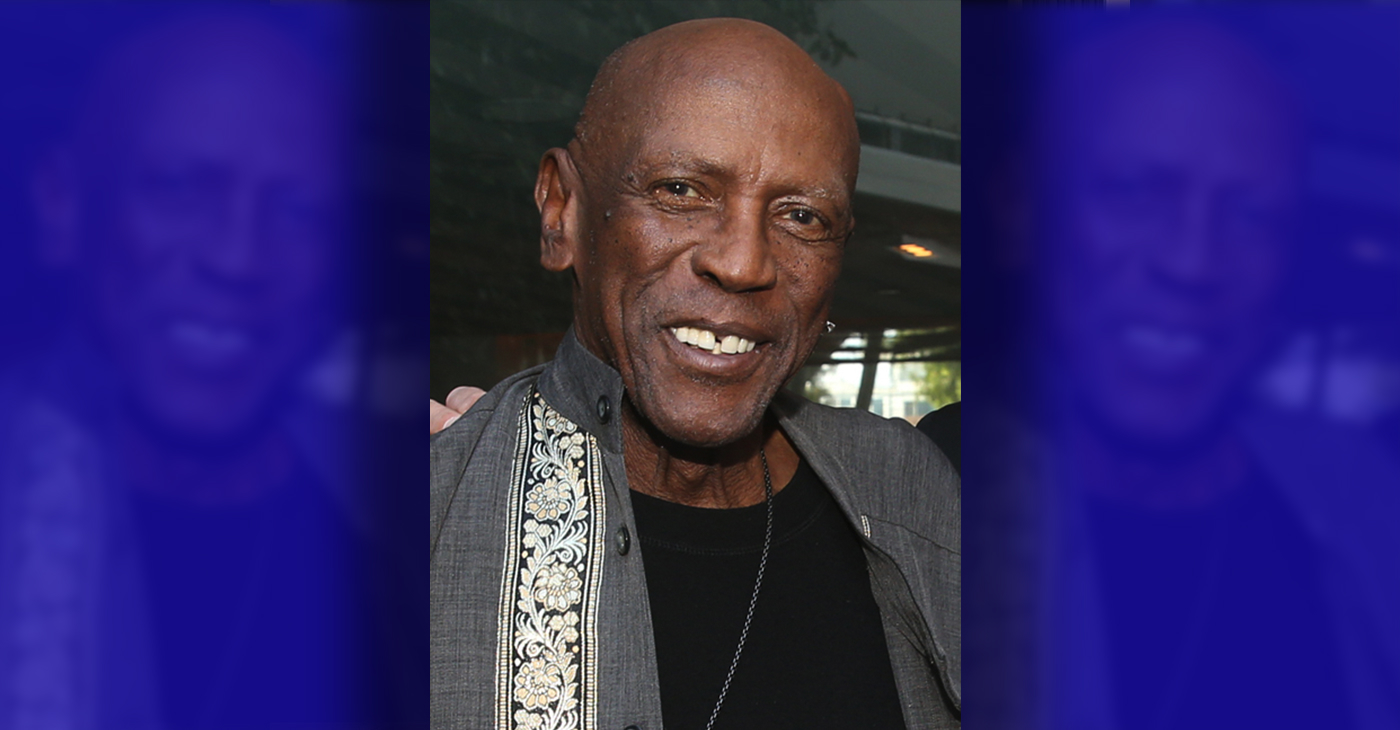
By Stacy M. Brown
NNPA Newswire Senior National Correspondent
@StacyBrownMedia
Louis Gossett Jr., the groundbreaking actor whose career spanned over five decades and who became the first Black actor to win an Academy Award as Best Supporting Actor for his memorable role in “An Officer and a Gentleman,” has died. Gossett, who was born on May 27, 1936, in Brooklyn, N.Y., was 87. Recognized early on for his resilience and nearly unmatched determination, Gossett arrived in Los Angeles in 1967 after a stint on Broadway.
He sometimes spoke of being pulled over by law enforcement en route to Beverly Hills, once being handcuffed to a tree, which he remembered as a jarring introduction to the racial tensions of Hollywood. In his memoir “An Actor and a Gentleman,” Gossett recounted the ordeal, noting the challenges faced by Black artists in the industry. Despite the hurdles, Gossett’s talent shone brightly, earning him acclaim in groundbreaking productions such as “A Raisin in the Sun” alongside Sidney Poitier. His Emmy-winning portrayal of Fiddler in “Roots” solidified his status as a trailblazer, navigating a landscape fraught with racial prejudice.
According to the HistoryMakers, which interviewed him in 2005, Gossett’s journey into the limelight began during his formative years at PS 135 and Mark Twain Junior High School, where he demonstrated early leadership as the student body president. His passion for the arts blossomed when he starred in a “You Can’t Take It With You” production at Abraham Lincoln High School, catching the attention of talent scouts who propelled him onto Broadway’s stage in “Take A Giant Step.” His stellar performance earned him the prestigious Donaldson Award for Best Newcomer to Theatre in 1952. Though initially drawn to sports, Gossett’s towering 6’4” frame and athletic prowess led him to receive a basketball scholarship at New York University. Despite being drafted by the New York Knicks in 1958, Gossett pursued his love for acting, honing his craft at The Actors Studio under the tutelage of luminaries like John Sticks and Peggy Fury.
In 1961, Gossett’s talent caught the eye of Broadway directors, leading to roles in acclaimed productions such as “Raisin in the Sun” and “The Blacks,” alongside legends like James Earl Jones, Cicely Tyson, Roscoe Lee Brown, and Maya Angelou. Transitioning seamlessly to television, Gossett graced small screens with appearances in notable shows like “The Bush Baby” and “Companions in Nightmare.” Gossett’s silver screen breakthrough came with his role in “The Landlord,” paving the way for a prolific filmography that spanned over 50 movies and hundreds of television shows. From “Skin Game” to “Lackawanna Blues,” Gossett captivated audiences with his commanding presence and versatile performances.
However, his portrayal of “Fiddler” in Alex Haley’s groundbreaking miniseries “Roots” earned Gossett critical acclaim, including an Emmy Award. The HistoryMakers noted that his golden touch extended to the big screen, where his role as Sergeant Emil Foley in “An Officer and a Gentleman” earned him an Academy Award for Best Supporting Actor, making him a trailblazer in Hollywood history.
Beyond the glitz and glamour of Hollywood, Gossett was deeply committed to community activism. In 1964, he co-founded a theater group for troubled youth alongside James Earl Jones and Paul Sorvino, setting the stage for his lifelong dedication to mentoring and inspiring the next generation. Gossett’s tireless advocacy for racial equality culminated in the establishment of Eracism, a nonprofit organization dedicated to combating racism both domestically and abroad. Throughout his illustrious career, Gossett remained a beacon of strength and resilience, using his platform to uplift marginalized voices and champion social change. Gossett is survived by his children, Satie and Sharron.
The post Beloved Actor and Activist Louis Cameron Gossett Jr. Dies at 87 first appeared on BlackPressUSA.
#NNPA BlackPress
COMMENTARY: D.C. Crime Bill Fails to Address Root Causes of Violence and Incarceration
WASHINGTON INFORMER — The D.C. crime bill and so many others like it are reminiscent of the ‘94 crime bill, which produced new and harsher criminal sentences, helped deploy thousands of police and surveilling methods in Black and brown communities, and incentivized more states to build prisons through a massive infusion of federal funding. While it is not at the root of mass incarceration, it significantly accelerated it, forcing a generation of Black and brown families into a never-ending cycle of state-sanctioned violence and incarceration.
The post COMMENTARY: D.C. Crime Bill Fails to Address Root Causes of Violence and Incarceration first appeared on BlackPressUSA.
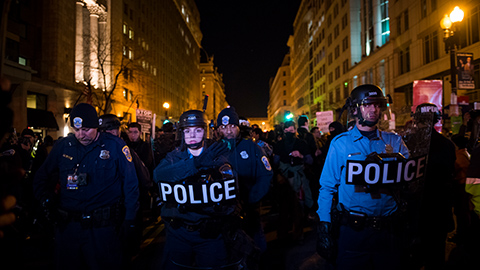
By Kaili Moss and Jillian Burford | Washington Informer
Mayor Bowser has signed the “Secure DC” omnibus bill passed by the D.C. Council last month. But we already know that this bill will be disastrous for all of D.C., especially for Black and brown residents.
While proponents claim that this legislation “will make D.C. residents safer and more secure,” it actually does nothing to address the root of the harm in the first place and instead maintains a cycle of violence, poverty, and broken community ties. The omnibus bill calls for increased surveillance, drug-free zones, and will expand pre-trial detention that will incarcerate people at a significantly higher rate and for an indeterminate amount of time before they are even tried. This bill will roll back decades of nationwide policy reform efforts and initiatives to keep our communities safe and whole, which is completely contradictory to what the “Secure” D.C. bill claims it will do.
What is unfolding in Washington, D.C., is part of a dangerous national trend. We have seen a resurrection of bad crime bills in several jurisdictions across the country — a phenomenon policy experts have named “zombie laws,” which are ineffective, costly, dangerous for communities of color and, most importantly, will not create public safety. Throwing more money into policing while failing to fund preventative measures does not keep us safe.
The D.C. crime bill and so many others like it are reminiscent of the ‘94 crime bill, which produced new and harsher criminal sentences, helped deploy thousands of police and surveilling methods in Black and brown communities, and incentivized more states to build prisons through a massive infusion of federal funding. While it is not at the root of mass incarceration, it significantly accelerated it, forcing a generation of Black and brown families into a never-ending cycle of state-sanctioned violence and incarceration. Thirty years later, despite spending billions each year to enforce these policies with many of these provisions remaining in effect, it has done very little to create long-term preventative solutions. Instead, it placed a permanent moving target on the backs of Black people, and the D.C. crime bill will do the same.
The bill calls for more pretrial detention. When our loved ones are held on pretrial detention, they are held on the presumption of guilt for an indeterminate amount of time before ever seeing a judge, which can destabilize people and their families. According to experts at the Malcolm Weimer Center for Social Policy at Harvard University, just one day in jail can have “devastating consequences.” On any given day, approximately 750,000 people are held in jails across the nation — a number that beats our nation’s capital population by about 100,000. Once detained, people run the risk of losing wages, jobs, housing, mental and health treatments, and time with their families. Studies show that pretrial detention of even a couple of days makes it more likely for that person to be rearrested.
The bill also endangers people by continuing a misguided and dangerous War on Drugs, which will not get drugs off the street, nor will it deter drug use and subsequent substance use disorders (SUDs). Drug policies are a matter of public health and should be treated as such. Many states such as Alabama, Iowa and Wisconsin are treating the current fentanyl crisis as “Crack 2.0,” reintroducing a litany of failed policies that have sent millions to jails and prisons instead of prioritizing harm reduction. Instead, we propose a simple solution: listen to members of the affected communities. Through the Decrim Poverty D.C. Coalition, community members, policy experts and other stakeholders formed a campaign to decriminalize drugs and propose comprehensive legislation to do so.
While there are many concerning provisions within the omnibus bill, car chases pose a direct physical threat to our community members. In July 2023, NBC4 reported that the D.C. Council approved emergency legislation that gave MPD officers the ability to engage in vehicular pursuits with so-called “limited circumstances.” Sgt. Val Barnes, the head of MPD’s carjacking task force, even expressed concern months before the decision, saying, “The department has a pretty strict no-chase policy, and obviously for an urban setting and a major metropolitan city, that’s understandable.” If our law enforcement officers themselves are operating with more concern than our elected officials, what does it say about the omnibus bill’s purported intention to keep us safe?
And what does it mean when the risk of bodily harm is posed by the pursuit itself? On Saturday, Feb. 10, an Eckington resident had a near-miss as a stolen car barreled towards her and her dog on the sidewalk with an MPD officer in pursuit. What responsibility does the city hold if this bystander was hit? What does restitution look like? Why are our elected officials pushing for MPD officers to contradict their own policies?
Just a few summers ago during the uprisings of 2020, we saw a shift in public perspectives on policing and led to legislation aimed at limiting police power after the highly-publicized murders of loved ones Breonna Taylor and George Floyd — both victims of War on Drugs policing and the powers gained from the ’94 crime bill. And yet here we are. These measures do not keep us safe and further endanger the health of our communities. Studies show that communities that focus on harm reduction and improving material conditions have a greater impact on public safety and community health. What’s missing in mainstream conversations about violent crime is the violence that stems from state institutions and structures that perpetuate racial and class inequality. The people of D.C. deserve to feel safe, and that includes feeling safe from the harms enacted by the police.
Kaili Moss is a staff attorney at Advancement Project, a national racial justice and legal organization, and Jillian Burford is a policy organizer at Harriet’s Wildest Dreams.
The post COMMENTARY: D.C. Crime Bill Fails to Address Root Causes of Violence and Incarceration first appeared on BlackPressUSA.
#NNPA BlackPress
Mayor, City Council President React to May 31 Closing of Birmingham-Southern College
THE BIRMINGHAM TIMES — “This is a tragic day for the college, our students, our employees, and our alumni, and an outcome so many have worked tirelessly to prevent,” Rev. Keith Thompson, chairman of the BSC Board of Trustees said in an announcement to alumni. “We understand the devastating impact this has on each of you, and we will now direct our efforts toward ensuring the smoothest possible transition for everyone involved.”
The post Mayor, City Council President React to May 31 Closing of Birmingham-Southern College first appeared on BlackPressUSA.

By Barnett Wright | The Birmingham Times
Birmingham-Southern College will close on May 31, after more than a century as one of the city’s most respected institutions.
“This is a tragic day for the college, our students, our employees, and our alumni, and an outcome so many have worked tirelessly to prevent,” Rev. Keith Thompson, chairman of the BSC Board of Trustees said in an announcement to alumni. “We understand the devastating impact this has on each of you, and we will now direct our efforts toward ensuring the smoothest possible transition for everyone involved.”
There are approximately 700 students enrolled at BSC this semester.
“Word of the decision to close Birmingham Southern College is disappointing and heartbreaking to all of us who recognize it as a stalwart of our community,” Birmingham Mayor Randall Woodfin said in a statement. “I’ve stood alongside members of our City Council to protect this institution and its proud legacy of shaping leaders. It’s frustrating that those values were not shared by lawmakers in Montgomery.”
Birmingham City Council President Darrell O’Quinn said news of the closing was “devastating” on multiple levels.
“This is devastating for the students, faculty members, families and everyone affiliated with this historic institution of higher learning,” he said. “It’s also profoundly distressing for the surrounding community, who will now be living in close proximity to an empty college campus. As we’ve seen with other institutions that have shuttered their doors, we will be entering a difficult chapter following this unfortunate development … We’re approaching this with resilience and a sense of hope that something positive can eventually come from this troubling chapter.”
The school first started as the merger of Southern University and Birmingham College in 1918.
The announcement comes over a year after BSC officials admitted the institution was $38 million in debt. Looking to the Alabama Legislature for help, BSC did not receive any assistance.
This past legislative session, Sen. Jabo Waggoner sponsored a bill to extend a loan to BSC. However, the bill subsequently died on the floor.
Notable BSC alumni include former New York Times editor-in-chief Howell Raines, former U.S. Sen. Howell Heflin and former Alabama Supreme Court Chief Justice Perry O. Hooper Sr.
This story will be updated.
The post Mayor, City Council President React to May 31 Closing of Birmingham-Southern College first appeared on BlackPressUSA.
-

 Activism4 weeks ago
Activism4 weeks agoOakland Post: Week of March 27 – April 2, 2024
-
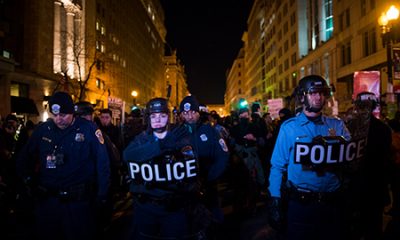
 #NNPA BlackPress4 weeks ago
#NNPA BlackPress4 weeks agoCOMMENTARY: D.C. Crime Bill Fails to Address Root Causes of Violence and Incarceration
-

 #NNPA BlackPress4 weeks ago
#NNPA BlackPress4 weeks agoFrom Raids to Revelations: The Dark Turn in Sean ‘Diddy’ Combs’ Saga
-
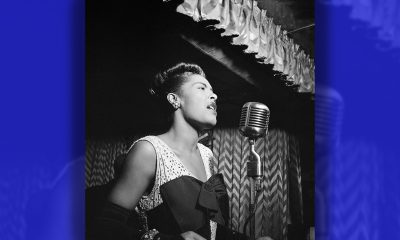
 #NNPA BlackPress4 weeks ago
#NNPA BlackPress4 weeks agoCOMMENTARY: Lady Day and The Lights!
-

 #NNPA BlackPress4 weeks ago
#NNPA BlackPress4 weeks agoMayor, City Council President React to May 31 Closing of Birmingham-Southern College
-

 #NNPA BlackPress4 weeks ago
#NNPA BlackPress4 weeks agoBaltimore Key Bridge Catastrophe: A City’s Heartbreak and a Nation’s Alarm
-

 #NNPA BlackPress4 weeks ago
#NNPA BlackPress4 weeks agoBaltimore’s Key Bridge Struck by Ship, Collapses into Water
-
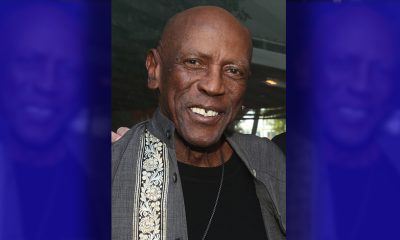
 #NNPA BlackPress4 weeks ago
#NNPA BlackPress4 weeks agoBeloved Actor and Activist Louis Cameron Gossett Jr. Dies at 87

